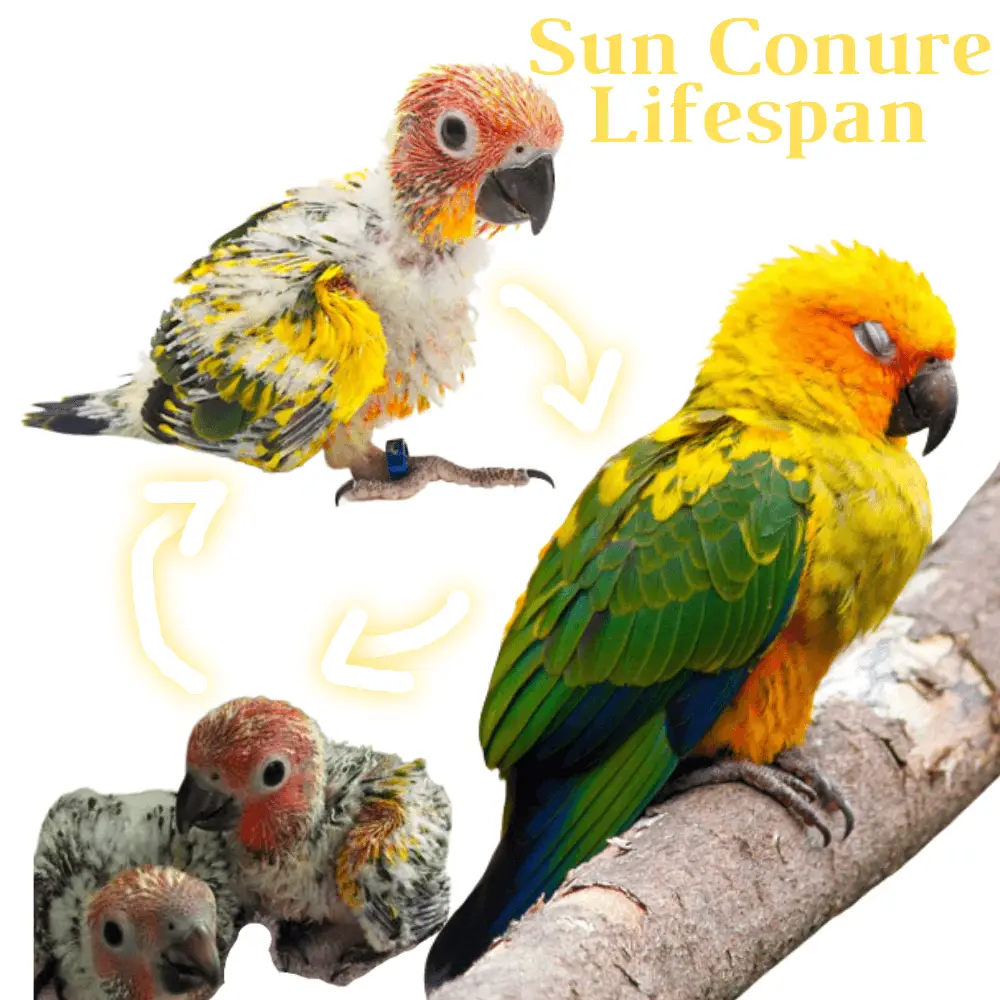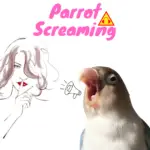
A sun conure parrot or Aratinga solstitialis can live up to 25 years or more with proper care. A sun conure parrot’s lifespan is 25 to 30 years in captivity. In the wild, they may only live five to 20 years
Life in captivity and behavior
Despite its robustness, conure is a species that adapts rather difficult in captivity. Indeed, they are extremely noisy birds and have little tolerating life in small spaces.
They are small parrots with strong character. They are very active and often express themselves in a noisy and, to be honest, unpleasant way. Nevertheless, as with all, they are very sociable birds and greatly appreciate group life. They are playful and very curious.
They are known to be adventurous. For my part, I also find them very touching and very expressive in their look and their way of being! They are also very tactile and appreciate caresses.
They enjoy snuggling up in their necks or in clothes. They are excellent and faithful companions. However, they still have their fine print and can sometimes become exclusive. At sexual maturity, some individuals, males in particular, also tend to become territorial and aggressive towards other individuals, whether humans or birds.
This can then make it difficult to coexist with other species since, despite their small size, they are reckless! Indeed, they are known to carry out attacks in flight such as mini-raptors. Overflowing with energy, if they remain locked up for too long, they abandon themselves to other alternative activities such as stereotypies or hyper-vocalization.
As you have understood, it takes large spaces and many occupations to satisfy these small hyper-active beings.
The main reason for their abandonment in captivity is their cry. Aratinga conures are the loudest! of conure species.
Their cries are loud (up to 100 decibels) and are also frequent. They are naturally very talkative! The ideal is then to offer them an outdoor space rather than having them at home…
Life in the wild
They are native to South America, mainly on the Brazilian side, they are also found in Suriname, Venezuela, Bolivia, and Guyana. They are particularly popular in primary and dense forests.
Health side
Sun conures are very robust parrots and rarely get sick in conditions that properly meet their needs (varied food, etc.). However, if these birds do not spend enough on it, they tend to develop liver problems that then encourage the development of plumage and skin abnormalities.
This can then lead to over-smoothing of feathers or pecking. Thus, as for everyone, it is recommended to have a balanced diet and to do physical activities!
Scientific and systematic name
Family: Psittaciformes
Order: Psittacidae
Gender: Aratinga
Species: solstitialis
Physical description
Height: 30 cm
Weight: 110- 130 grams
It is a very colorful bird, hence its name! Its head and belly are an intense yellow but also present red-orange. Its wings are predominantly yellow bordered with green (unlike its sister Janaya which has all green wings!). The beak is black, as are the legs.
Reproduction
The female lays 3-5 eggs, which she will have to incubate for 23-25 days. The young come out of the nest around the age of 2 months and are weaned a few weeks after their first flight. As with the Jandaya conure, sexual dimorphism is invisible in young birds as well as not very obvious in adults. Generally speaking, the male has a slightly larger beak than the female.
The sun conure cost 250$ to 600$.
Conclusion
For these sun conures, I highly recommend someone who already has experience with parrots. Indeed, put in inexperienced hands, these birds can develop serious behavioral disorders, become even noisier and even aggressive. So these are not birds that are suitable for beginners, nor for people who live in apartments.
Protection status
With between 1000 and 3000 masted individuals in 2016, it is a species classified as “endangered” by the IUCN.




















